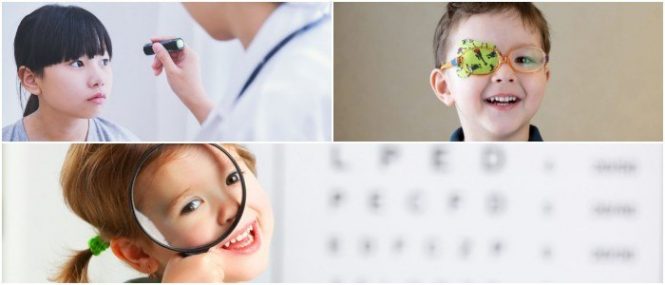
This term refers to a partial or complete loss of vision without obvious defect or change in the affected eye.
Amblyopia, also known as Lazy Eye, is an early childhood condition featuring reduced vision in one eye. Medical experts state that Amblyopia rarely affects both eyes.
It occurs when the brain focuses more on one eye than the other due to nerve cells not getting stimulation.
Amblyopia usually occurs anywhere between birth up to 7 years of age. The sooner a patient gets diagnosed, the easier it is to provide with a treatment that may prevent long-term vision problems.
In the United States, this condition affects around 2% of all children often causing partial or complete blindness in the affected eye.
Causes
Several factors related to unusual visual experiences in early life can lead to the development of this ocular condition.
Vision problems may alter nerve pathways between the retina (the sensory membrane that lines the back of the eye). When one eye receives very few nerve signals, its vision gets weaker.
That would gradually decrease the ability of the eyes to work together, which leads the brain to suppress the input from the affected eye.
Taking that into consideration, medical experts concluded that several underlying ocular conditions could cause Amblyopia. Some of them are listed here below:
Strabismus or muscle imbalance, some eyecare specialist deem it as the most typical cause of Amblyopia.
It refers to a problem with the muscles that position the eyes that results in each of them pointing in different directions. Such imbalance prevents the eyes from tracking an image together.
The brain ends up ignoring the input of the unfocused eye to compensate for the lack of coordination between both eyes. Such a condition could prevent the child’s vision from developing correctly.
Anisometropia, which refers to the two eyes having different refractive power. If such a difference is significant enough, it can lead to the development of Amblyopia.
Myopia or Nearsightedness, the most common refractive error, the term describes the inability to see distant objects properly.
This visual abnormality occurs due to the eyes growing too long from front to back, which causes light rays to focus at only one point in front of the retina.
Hyperopia or Farsightedness refers to another refractive error that consists of the inability to see objects nearby clearly but having no problem perceiving distant things.
It occurs when light rays get refracted at the back of the eye either because the eyeball is too short to focus light on the retina.
Astigmatism, which is a fault in the in the curvature of the eyes’ corneas or lens that results in a blurry vision at all distances due to light failing to come to a single focus on the retina.
In some cases, the cause of Amblyopia is a combination of some of the refractive problems mentioned here.
Some other potential causes of this ocular condition are related to Cataracts, a term that describes a clouding of the eye’s natural lens which may lead to blurry vision.
Symptoms
Some of the most typical signs of Amblyopia can get confused with other visual impairments. Usually, people need to pay attention to the subtle behavioral changes in the patients.
The symptoms of this condition may involve the eye wandering inward and outwards. Sometimes, the eyes will seem unable to work together.
Other symptoms of Amblyopia include poor depth perception, continually squitting or shutting an eye, and head tilting due to the lacking vision in the affected eye.
Diagnosis
Ophthalmologists usually determine the presence of Amblyopia by checking to see if the vision power differs between the two eyes.
When it comes to infants or young children, doctors may check their vision by covering one of the child’s eyes to test how well the patient can follow a moving object.
Medical experts also analyze how the child reacts when one eye gets covered.
When infants with Amblyopia get their healthy eye covered, they may try to look above or below the patch, pull it off, or even cry.
Ophthalmologists may do a complete medical eye exam, which could also help them to identify the possible underlying condition causing the issue.
Treatment
When infants or children get diagnosed with Amblyopia, eye-care specialists may recommend therapies that involve using the affected eye to strengthen its vision power.
They may achieve this by placing an adhesive patch over the stronger eye. This method may take weeks to months before the connection between the eye and brain becomes normal.
Other doctors prefer to use a drug called Atropine to blur the vision of the stronger eye temporarily so that the brain gets forced to use the weaker eye to focus on objects.
